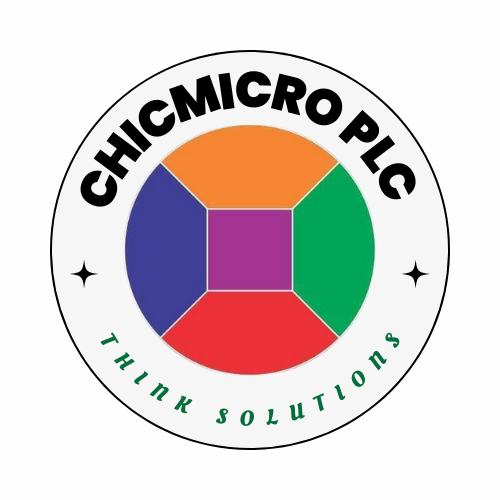
Introduction to ChatGPT and Its Potential in Marketing
ChatGPT is an advanced AI language model developed by OpenAI, designed to understand and generate human-like text based on the input it receives. This innovative technology utilizes deep learning and natural language processing to enable seamless interactions, making it particularly valuable for various applications, including marketing. With the escalating demand for concise and captivating communication, marketers are increasingly turning to AI tools like ChatGPT to create messages that resonate with audiences.
In the realm of marketing, the importance of well-crafted emails cannot be understated. They serve as a direct line of communication between businesses and customers, playing a pivotal role in audience engagement and conversion rates. ChatGPT offers marketers the ability to enhance these emails by providing tailored content that aligns with the target audience’s preferences and interests. The model’s capabilities include generating attention-grabbing subject lines, optimizing body content for clarity and engagement, and adapting tone and style to fit specific brand identities.
Utilizing AI in marketing strategies not only streamlines the content creation process but also enhances overall productivity. Marketers can leverage ChatGPT to produce multiple versions of an email quickly, allowing for A/B testing to determine which messages resonate best with their audience. This predictive ability can result in higher open and click-through rates, ultimately driving increased customer engagement. Moreover, by helping to identify trending topics and relevant keywords, ChatGPT ensures that marketing emails remain timely and relevant, providing a significant competitive edge in a crowded marketplace.
Understanding Your Audience
When crafting an effective marketing email, one of the foundational elements is a thorough understanding of your audience. Knowing your target audience allows you to tailor your message and approach, ensuring that the communication resonates with recipients. To begin, audience segmentation is a valuable technique that involves categorizing your audience into distinct groups based on specific criteria, such as demographics, interests, and buying behaviors. By segmenting your audience, you can create more targeted emails that effectively speak to each group’s unique needs.
Creating detailed customer personas is another crucial step in understanding your audience. A customer persona is a semi-fictional representation of your ideal customer, built upon real data, market research, and insights. By mapping out characteristics such as age, gender, income level, and preferences, you can gain a clearer picture of who your audience is and what they seek. When you understand what drives your customers, you can craft marketing emails that align with their interests and address their pain points.
Furthermore, tailoring your messages to fit the specific interests and needs of various audience segments enhances the likelihood of engagement. Using personalized content, such as recommendations based on previous purchases or location-based offers, can help foster a deeper connection between your brand and the recipient. This, in turn, can lead to higher open rates and conversions.
Incorporating tools like ChatGPT can streamline the process of audience analysis. ChatGPT can help you sift through audience data, providing insights on what content resonates most with different groups. Additionally, it can assist in generating creative ideas for marketing emails that cater to specific personas or segments. By leveraging these insights, you are better equipped to create compelling marketing emails that capture your audience’s attention.
Crafting the Subject Line with ChatGPT
The subject line of a marketing email plays a pivotal role in attracting the attention of recipients, significantly influencing their decision to open the email. It serves as the first impression and often determines the open rates of email campaigns. Therefore, it is essential to construct subject lines that are both compelling and reflective of the content within the email. Effective subject lines tend to be succinct, personalized, and evoke curiosity or urgency.
One of the best practices for writing subject lines is to keep them short and to the point. Ideally, aim for 50 characters or fewer to ensure they are fully visible across various devices. Additionally, using action-oriented language can motivate recipients to engage with the content. For instance, incorporating phrases like “Unlock”, “Discover”, or “Exclusive Offer” creates an actionable tone that encourages clicks.
Another crucial aspect is personalization. Tailoring subject lines to reflect the recipient’s interests or previous interactions can significantly enhance engagement. ChatGPT can assist marketers in generating personalized and contextually relevant subject lines by analyzing customer data and preferences. By inputting specific themes or campaign goals, marketers can obtain suggestions that align with their target audience.
For example, if a business is launching a summer sale, ChatGPT could produce catchy subject lines such as, “Dive into Summer Savings – Up to 50% Off!” or “Heat Up Your Summer with Exclusive Deals!” Both examples convey urgency and entice the recipient by highlighting the potential benefits. The reasoning behind their effectiveness lies in their ability to immediately communicate value while creating a sense of excitement.
In conclusion, leveraging tools like ChatGPT in the subject line creation process can enhance the overall impact of email marketing campaigns. By adhering to established best practices and utilizing AI-generated suggestions, marketers can craft subject lines that not only capture attention but ultimately drive higher open rates.
Creating Engaging Email Content
In the evolving landscape of digital marketing, crafting compelling email content is crucial for engaging your audience effectively. A well-structured marketing email resonates with recipients and encourages action. The first step is personalization, which entails addressing the recipient by name and tailoring the content to their preferences or past interactions. This level of attention fosters a connection, making the reader feel valued and more likely to engage with the message.
The core of an effective email lies in its value proposition. This element clearly communicates the benefits of the product or service, demonstrating why it matters to the reader. By utilizing ChatGPT, marketers can generate insights into what value resonates most with their target demographic. The AI can assist in creating engaging headlines and summaries that highlight key benefits, thus ensuring the email captures attention right from the subject line.
A compelling call to action (CTA) is another essential component of effective marketing emails. The CTA should be clear, concise, and encourage readers to take a specific step, such as making a purchase, downloading a resource, or visiting a website. ChatGPT can help in brainstorming innovative phrasing for CTAs that align with the overall tone and message of the brand. Keeping the CTA aligned with the brand’s voice ensures coherence across communications, which can further establish trust and loyalty among recipients.
Once the initial draft is generated using ChatGPT, it’s important to refine and edit the content to enhance readability and engagement. This involves reviewing the text for clarity, checking for grammatical accuracy, and ensuring the brand tone is consistently maintained. Utilizing feedback from team members or stakeholders can also provide fresh perspectives and ideas for improvement. As a result, you can deliver a polished and impactful marketing email that stands out in the crowded inboxes of your audience.
Utilizing ChatGPT for Copy Variants
In the realm of digital marketing, where engagement and conversion rates dictate success, testing various email copy variants has become indispensable. Businesses can leverage the capabilities of ChatGPT to generate a series of compelling email versions tailored for A/B testing. This process allows marketers to assess which copy resonates most effectively with their audience, ultimately leading to higher engagement levels and improved conversion rates.
When utilizing ChatGPT for this purpose, it is crucial to consider multiple scenarios where different variants can be applied. For instance, businesses can experiment with various subject lines to see which one garners a higher open rate. By asking ChatGPT to generate several catchy and relevant subject lines, marketers can analyze performance metrics to identify the most effective option. Similarly, differing calls to action (CTAs) can significantly influence user behavior; using ChatGPT to create diverse CTAs can help determine which wording propels readers toward taking the desired action.
Additionally, ChatGPT can aid in generating varied content styles and tones to meet the preferences of different audience segments. A company targeting young professionals may prefer a more casual tone, whereas a corporate audience may respond better to a formal approach. By inputting specific parameters into ChatGPT, businesses can generate tailored copy that aligns with their target market’s expectations.
Once the email variants are created, the next step involves deploying them in a controlled A/B test. This enables marketers to monitor responses and evaluate which version yields the best results. The insights gained from these tests are invaluable, allowing businesses to refine their email marketing strategies, enhance customer interaction, and ultimately foster greater conversion rates.
Incorporating Visual Elements in Marketing Emails
In the realm of email marketing, visual elements play a pivotal role in capturing and retaining the reader’s attention. Incorporating images, graphics, and a well-structured layout can significantly enhance the overall appeal of your marketing emails. While ChatGPT may not generate visual content, it can certainly assist in brainstorming ideas and strategies for effective visual integration within your emails.
To begin with, consider the relevance of visuals to your message. A well-chosen image can evoke emotions, represent brand identity, and simplify complex information. For example, if your email promotes a new product, showcasing high-quality images of the product can provide readers with a clear idea of what to expect. Additionally, infographics can summarize data in a visually appealing manner, making it easier for your audience to grasp essential points quickly.
When using ChatGPT, one can solicit recommendations for the types of images or graphics that would best complement the text content. For instance, asking the AI to suggest themes or styles that resonate with your target audience can lead to insights that refine visual choices. Moreover, incorporating color schemes and fonts consistent with your brand can unify the email’s appearance, which is crucial for maintaining brand identity.
The layout of the email is equally important. A clean, organized structure can enhance readability and guide the reader’s eye through the content. Using headings, bullet points, and images strategically can break up text blocks and create focal points that maintain engagement. ChatGPT can help generate templates or layouts, offering structured ideas that can be seamlessly integrated with your visuals.
In conclusion, integrating visual elements effectively can amplify the impact of your marketing emails. Although ChatGPT does not create visuals directly, its capacity to provide creative suggestions and structural advice can significantly enhance the visual appeal and overall effectiveness of your email marketing efforts.
Ensuring Compliance and Best Practices
In the realm of marketing, ensuring compliance with legal regulations and best practices is paramount, especially when crafting marketing emails. Two key pieces of legislation that govern email marketing are the General Data Protection Regulation (GDPR) and the CAN-SPAM Act. The GDPR, which is applicable to all organizations handling the personal data of EU citizens, emphasizes the need for explicit consent from individuals before sending marketing communications. This necessitates clear opt-in processes, where users must agree to receive emails, fully understanding what their consent entails.
Conversely, the CAN-SPAM Act, which applies in the United States, sets forth guidelines that require companies to provide recipients with an ability to opt-out of future communications seamlessly. It also mandates the inclusion of a physical mailing address in every marketing email, thus underscoring the importance of transparency and accountability. Failing to comply with these regulations not only risks hefty fines but can also damage a brand’s reputation and erode trust among subscribers.
Utilizing ChatGPT can significantly assist marketers in drafting legally compliant email content. This AI-powered tool can generate text that adheres to compliance regulations by suggesting phrases that incorporate consent statements and opt-out instructions seamlessly within the body of the email. By guiding marketers through the maze of legal jargon, ChatGPT can help ensure that the email not only appeals to the audience but also complies with essential regulations. Additionally, marketers can employ ChatGPT to create customizable templates that reinforce good practices for privacy, enhancing the overall effectiveness of their campaigns.
In conclusion, awareness of the legal implications surrounding marketing emails is vital. By leveraging automated tools like ChatGPT, marketers can navigate these complexities more efficiently, ensuring compliance while fostering positive relationships with their audience.
Testing and Analyzing Email Performance
In the ever-evolving landscape of digital marketing, measuring the success of email campaigns has become paramount. Metrics such as open rates, click-through rates (CTR), and conversion rates serve as crucial indicators of how well an email resonates with its intended audience. Analyzing these metrics allows marketers to gather insights into user behavior and preferences, ultimately guiding the optimization of future campaigns.
The process begins shortly after an email is sent. Utilizing analytics tools, marketers can track and evaluate the performance of their emails in real time. Open rates reveal the percentage of recipients who viewed the email, providing insight into the effectiveness of subject lines and send times. Conversely, the click-through rate measures how many recipients engaged with the content within the email, pointing to the effectiveness of the call-to-action and overall content appeal. Conversion rates, on the other hand, reflect the true success of an email campaign by indicating how many recipients completed a desired action, such as making a purchase or signing up for a newsletter.
To conduct precise analyses, marketers should consider using tools like Google Analytics, Mailchimp, or HubSpot, which offer comprehensive reporting and tracking capabilities. These platforms provide essential data that can highlight trends and patterns, allowing marketers to make data-driven decisions. Moreover, ChatGPT can play a significant role in interpreting complex data sets. By leveraging its language processing capabilities, ChatGPT can assist in identifying key takeaways, offering suggestions for strategic adjustments in tone, content, or timing based on performance metrics.
Ultimately, a thorough understanding of email performance metrics is vital for refining marketing strategies. By continually testing and analyzing these indicators, businesses can enhance their email marketing efforts, ensuring that each campaign effectively engages the audience and achieves its goals.
Conclusion: The Future of Email Marketing with AI
Based on the insights presented in this blog post, it is evident that the integration of AI technologies such as ChatGPT into email marketing strategies can provide significant advantages. As we discussed, ChatGPT is not only capable of generating high-quality content but can also personalize emails at scale, optimize messaging based on data, and improve overall engagement rates with audiences. The potential for enhancing email marketing performance with AI assistance is immense and should not be overlooked.
The landscape of email marketing is continuously evolving, shaped by technological advancements and shifting consumer preferences. As businesses strive to achieve better engagement and conversion rates, employing AI tools like ChatGPT allows marketers to adapt and innovate effectively. These AI models offer the opportunity to experiment with various strategies, efficiently handle writing tasks, and focus on more complex initiatives that require human creativity and intuition.
Moreover, as consumers expect more tailored interactions, ChatGPT can help meet those demands by crafting personalized messages that resonate well with target audiences. The ability to analyze customer data and generate bespoke content lends a competitive edge to organizations striving to connect meaningfully with their consumers. As we look to the future, the role of AI in email marketing will become more pronounced.
In conclusion, embracing ChatGPT in your email marketing campaigns can streamline your content creation process and enhance the overall effectiveness of your messaging. We encourage readers to experiment with this innovative tool in their marketing efforts, as the results may lead to improved engagement and conversion rates for their email communications. The future of email marketing is undoubtedly intertwined with AI, and leveraging these technologies can pave the way for more impactful and successful marketing outcomes.



